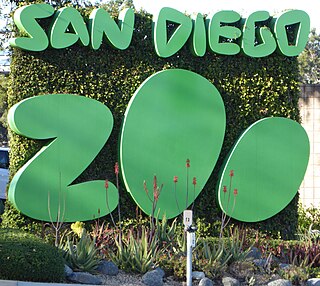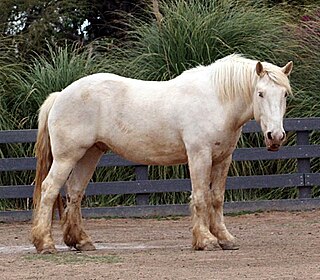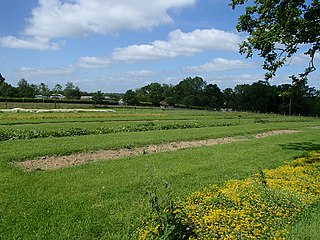 W
WConservation genetics is an interdisciplinary subfield of population genetics that aims to understand the dynamics of genes in populations principally to avoid extinction. Therefore, it applies genetic methods to the conservation and restoration of biodiversity. Researchers involved in conservation genetics come from a variety of fields including population genetics, molecular ecology, biology, evolutionary biology, and systematics. Genetic diversity is one of the three fundamental levels of biodiversity, so it is directly important in conservation. Genetic variability influences both the health and long-term survival of populations because decreased genetic diversity has been associated with reduced fitness, such as high juvenile mortality, diminished population growth, reduced immunity, and ultimately, higher extinction risk.
 W
WA dog breed is a particular strain or dog type that was purposefully bred by humans to perform specific tasks, such as herding, hunting, and guarding. When distinguishing breed from type, the rule of thumb is that a breed always "breeds true". Dogs are the most variable mammal on earth, with artificial selection producing around 450 globally recognized dog breeds. These breeds possess distinct traits related to morphology, which include body size, skull shape, tail phenotype, fur type, and coat colour. Their behavioural traits include guarding, herding, and hunting, and personality traits such as hypersocial behavior, boldness, and aggression. Most breeds were derived from small numbers of founders within the last 200 years. As a result, today dogs are the most abundant carnivore species and are dispersed around the world.
 W
WA frozen zoo is a storage facility in which genetic materials taken from animals are stored at very low temperatures (−196 °C) in tanks of liquid nitrogen. Material preserved in this way can be stored indefinitely and used for artificial insemination, in vitro fertilisation, embryo transfer, and cloning. Some facilities also collect and cryopreserve plant material.
 W
WThe Gesellschaft zur Erhaltung alter und gefährdeter Haustierrassen or GEH is a German national association for the conservation of historic and endangered domestic animal breeds.
 W
WAn heirloom plant, heirloom variety, heritage fruit, or heirloom vegetable is an old cultivar of a plant used for food that is grown and maintained by gardeners and farmers, particularly in isolated or ethnic minority communities of the Western world. These were commonly grown during earlier periods in human history, but are not used in modern large-scale agriculture.
 W
WA landrace is a domesticated, locally adapted, traditional variety of a species of animal or plant that has developed over time, through adaptation to its natural and cultural environment of agriculture and pastoralism, and due to isolation from other populations of the species. Landraces are generally distinguished from cultivars, and from breeds in the standardized sense, although the term landrace breed is sometimes used as distinguished from the term standardized breed when referring to cattle.
 W
WThe Livestock Conservancy, formerly known as the American Livestock Breeds Conservancy (ALBC) and prior to that, the American Minor Breeds Conservancy, is a nonprofit organization focused on preserving and promoting rare breeds, also known as "heritage breeds" of livestock. Founded in 1977, through the efforts of livestock breed enthusiasts concerned about the disappearance of many of the US's heritage livestock breeds, the Conservancy was the pioneer livestock preservation organization in the United States, and remains a leading organization in that field. It has initiated programs that have saved multiple breeds from extinction, and works closely with similar organizations in other countries, including Rare Breeds Canada. With 3,000 members, a staff of nine and a 19-member board of directors, the organization has an operating budget of almost half a million dollars.
 W
WThe Millennium Seed Bank Partnership, formerly known as the Millennium Seed Bank Project, is the largest ex situ plant conservation programme in the world coordinated by the Royal Botanic Gardens, Kew. After being awarded a Millennium Commission grant in 1995, the project commenced in 1996, and is now housed in the Wellcome Trust Millennium Building situated in the grounds of Wakehurst Place, West Sussex. Its purpose is to provide an "insurance policy" against the extinction of plants in the wild by storing seeds for future use. The storage facilities consist of large underground frozen vaults preserving the world's largest wild-plant seedbank or collection of seeds from wild species. The project had been started by Dr Peter Thompson and run by Paul Smith after the departure of Roger Smith. Roger Smith was awarded the OBE in 2000 in the Queen's New Year Honours for services to the Project.
ProSpecieRara, the "Schweizerische Stiftung für die kulturhistorische und genetische Vielfalt von Pflanzen und Tieren", is a non-profit charitable organization dedicated to the preservation of the genetic diversity of plants and animals in Switzerland. It was founded in 1982 in St. Gallen and is headquartered in Basel.
 W
WIn modern agriculture, a rare breed is a breed of poultry or livestock that has a very small breeding population, usually from a few hundred to a few thousand. Because of their small numbers, rare breeds may have a threatened conservation status, and they may be protected under regional laws. Many countries have organizations devoted to the protection and promotion of rare breeds, for which they each have their own definition. In botany and horticulture, the parallel to rare animal breeds are heirloom plants, which are rare cultivars.
 W
WThe Rare Breeds Conservation Society of New Zealand (RBCSNZ) was founded in 1988 to conserve, record and promote rare livestock breeds with the aim of maintaining genetic diversity within livestock species. The area of coverage is broad, and includes poultry as well as camelids, cattle, chinchillas, deer, donkeys, goats, horses, pigs, rabbits and sheep.
 W
WThe Rare Breeds Survival Trust is a conservation charity whose purpose is to secure the continued existence and viability of the native farm animal genetic resources (FAnGR) of the United Kingdom. It was founded in 1973 by Joe Henson to preserve native breeds; since then, no UK-native breed has become extinct.
 W
WThe SVF Foundation is a 501(c)(3) nonprofit organization that seeks to preserve rare breeds of livestock. It is the only private organization in the United States that preserves rare livestock by gathering and storing both semen and embryos of the animals in its collection, a technique called cryopreservation.
 W
WThe UK Native Seed Hub (UKNSH) is a project of the Royal Botanic Gardens, Kew's Millennium Seed Bank Partnership growing and distributing seeds of UK native plant species. It is in part a response to the 2010 report Making Space for Nature by Sir John Lawton. The project, located at Wakehurst Place, in West Sussex, in the High Weald of southern England, is dedicated to enhancing the resilience and coherence of the UK's ecological networks by improving the quality, quantity, and diversity of UK seed species available for use in conservation, rehabilitation, and restoration projects.
 W
WWest of England geese are a breed of autosexing domestic goose.